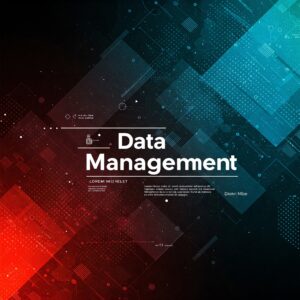How to Use Digital Ocean Cloud Storage Review 10 Pro Tips
We may earn money or products from the companies mentioned in this post.
Updated on the 29 March 2025

Hi there! I’m excited you’re here. Let’s explore some interesting facts about DigitalOcean Could storage together.
DigitalOcean Cloud Storage is a reliable and secure solution for businesses and individuals looking to store their data in the cloud.
With its user-friendly interface and robust features, it offers a seamless experience for managing files, backups, and more.
One of the key benefits of DigitalOcean Cloud Storage is its scalability.
Users can easily increase or decrease their storage capacity based on their needs, making it a flexible option for businesses of all sizes.
Additionally, its competitive pricing structure makes it an affordable choice compared to other cloud storage providers.
To get started with DigitalOcean Cloud Storage, users simply need to create an account on the platform and choose the storage plan that best fits their requirements.
Once set up, they can easily upload and manage files through the intuitive dashboard.
Another standout feature of DigitalOcean Cloud Storage is its security measures.
With encryption at rest and in transit, users can rest assured that their data is safe from unauthorized access. Additionally, regular backups ensure that data loss is minimized in the event of any unforeseen events.
In conclusion, DigitalOcean Cloud Storage is a top-notch solution for those seeking reliable cloud storage with excellent scalability, security features, and ease of use.
Whether you’re a small business or a large enterprise, this platform has everything you need to store your data efficiently and securely.
How to Use Digital Ocean Cloud Storage
A Brief overview of how to use DigitalOcean Cloud Storage
“DigitalOcean Cloud Storage offers a robust and scalable solution for storing, managing, and accessing data in the cloud.
As part of the DigitalOcean platform, it provides users with a reliable and cost-effective storage option, perfectly suited for a wide range of applications and use cases.
With its Object Storage feature, users can easily store and retrieve large volumes of data while benefiting from seamless scalability to accommodate growing storage needs.
DigitalOcean Cloud Storage includes advanced features like lifecycle policies, versioning for data protection, and access control for secure data management and control over data access and security.
Additionally, integration with Content Delivery Networks (CDNs) enables faster content delivery to end-users across the globe.
DigitalOcean Cloud Storage offers an intuitive interface, extensive documentation, and robust support to help users manage data efficiently and streamline workflows in the cloud.
Usage: Why It Counts

Efficient usage of cloud storage is paramount for both businesses and individuals in today’s digital age.
For businesses, efficient storage management directly impacts productivity, cost-effectiveness, and competitiveness.
Optimizing storage boosts workflow efficiency, data reliability, and accessibility while cutting on-premises storage costs.
Efficient cloud storage usage also enables scalability, allowing businesses to adapt to changing storage requirements without the need for significant upfront investments.
Additionally, for individuals, efficient cloud storage usage translates to seamless access to personnel files, photos, and documents across devices, ensuring data availability and synchronization.
It also facilitates collaboration and sharing, enabling individuals to collaborate with colleagues, friends, and family members effortlessly.
Efficient storage improves security by reducing risks like data loss, unauthorized access, and compliance violations for businesses and individuals.e.
Overall, efficient usage of cloud storage is crucial for unlocking the full potential of digital resources while maximizing productivity, cost-efficiency, and data security.
10 Tips: Optimize DigitalOcean Storage
In this review, we aim to provide readers with invaluable insights into optimizing their usage of DigitalOcean cloud storage.
Readers will get actionable storage tips from the expertly crafted presentation, enhancing their storage experience.
By delving into a comprehensive exploration of best practices and strategic approaches, we offer readers practical tools to navigate the complexities of cloud storage effectively.
These insights ensure not only improved efficiency and scalability but also bolster security measures, safeguarding digital assets within the DigitalOcean ecosystem.
Our goal is to empower users with knowledge and resources to maximize DigitalOcean cloud storage benefits and streamline digital workflows confidently.

Understand How To Use DigitalOcean Cloud Storage
Understanding Digital Ocean Cloud Storage is essential for harnessing its full potential in managing data effectively.
DigitalOcean Cloud Storage offers a reliable and scalable solution for storing various types of data securely in the cloud.
At its core, DigitalOcean Cloud Storage operates on an object storage model, providing users with the ability to store and retrieve data as objects through a simple and intuitive interface.
With this approach, users can easily manage large volumes of data, ranging from multimedia files to application backups and archives.
DigitalOcean Cloud Storage offers lifecycle policies, versioning, and ACLs to optimize data management, enhance data protection, and ensure security compliance.
Businesses and individuals can meet their storage needs effectively with DigitalOcean Cloud Storage, benefiting from scalability, reliability, and cost-effectiveness.

DigitalOcean Storage: What You Get
DigitalOcean Cloud Storage presents users with a comprehensive suite of features and functionalities tailored to meet diverse storage requirements.
At its core, DigitalOcean Cloud Storage offers scalable object storage, enabling users to store vast amounts of unstructured data efficiently.
This includes media files, backups, logs, and application data, among others.
One of its standout features is its simplicity and ease of use, allowing users to quickly upload, manage, and retrieve data through an intuitive web interface or programmatically via API.
Moreover, DigitalOcean Cloud Storage provides robust data protection mechanisms such as encryption at rest and in transit, ensuring the confidentiality and integrity of stored data.
Users can utilize advanced features such as lifecycle policies, versioning, and ACLs for data management and access control.
DigitalOcean Cloud Storage offers cost-effective solutions for managing cloud data with pay-as-you-go pricing and flexible storage, appealing to businesses and individuals.
Overview of key features and capabilities
DigitalOcean Cloud Storage encompasses a range of key features and capabilities designed to streamline data management and enhance the user experience.
Central to its offerings is Object Storage, providing users with a scalable solution for storing and accessing unstructured data such as images, videos, backups, and documents.
This feature is complemented by Lifecycle Policies, which empower users to automate data management tasks, including archiving or deleting objects based on predefined rules.
Furthermore, DigitalOcean Cloud Storage supports versioning, enabling users to maintain multiple versions of objects for enhanced data protection and recovery.
Access Control Lists (ACLs) allow users to define granular access permissions, ensuring data security and compliance with regulatory requirements.
Additionally, DigitalOcean Cloud Storage integrates seamlessly with Content Delivery Networks (CDNs), enabling users to deliver content to end-users with low latency and high performance.
DigitalOcean Cloud Storage provides reliable encryption, monitoring tools, and flexible pricing, making it a cost-effective solution for businesses and individuals managing data in the cloud.

Comparison with other cloud storage providers
While DigitalOcean Cloud Storage stands out as a robust and user-friendly option for cloud storage needs, it’s valuable to consider its features and offerings in comparison to other cloud storage providers.
DigitalOcean Cloud Storage provides a user-friendly alternative to AWS S3 or Google Cloud Storage, catering to users who value simplicity and clear pricing.
AWS S3 and Google Cloud Storage offer more services, integrations, and advanced features for enterprise scalability, performance, and analytics.
AWS and Google Cloud have varying pricing models, including data transfer, request rates, and storage tiers.
The decision between DigitalOcean Cloud Storage and other providers varies based on personal preferences, budget, and storage needs like features, performance, and scalability.

Pro Tip 1: Utilize Object Storage for Scalability
Pro Tip 1 emphasizes leveraging object storage within DigitalOcean for scalability, a fundamental aspect of effective cloud storage management.
Object Storage offers a flexible solution for accommodating varying storage needs, allowing users to seamlessly scale their storage capacity as data requirements evolve.
By utilizing object storage, users can store and manage large volumes of unstructured data efficiently, including media files, backups, and logs, without the constraints of traditional file-based storage systems.
This scalability is particularly beneficial for businesses experiencing rapid growth or fluctuating data volumes, as it eliminates the need for upfront hardware investments and simplifies capacity planning.
Moreover, Object Storage’s pay-as-you-go pricing model ensures cost-effectiveness, enabling users to scale their storage infrastructure in line with their budgetary requirements.
By embracing object storage for scalability, users can future-proof their storage infrastructure, ensuring it remains agile and adaptable to their evolving storage needs.

Explanation of Object Storage feature
Object Storage, a cornerstone feature of DigitalOcean Cloud Storage, operates on a unique paradigm distinct from traditional file systems, making it crucial to understand its nuances.
At its core, Object Storage stores data as discrete units known as objects, each comprising the data itself, metadata, and a unique identifier.
This approach simplifies data management by eliminating the hierarchical structure found in file systems, allowing for seamless scalability and efficient retrieval.
Objects are accessed via APIs or dedicated interfaces rather than through a traditional file hierarchy, enabling straightforward integration with various applications and workflows.
Additionally, Object Storage offers inherent redundancy and durability, with data replicated across multiple servers and data centers to ensure high availability and resilience against hardware failures.
DigitalOcean’s Object Storage includes encryption for data confidentiality and integrity, offering robust security features that give users peace of mind. integrity.
Overall, the Object Storage feature in DigitalOcean Cloud Storage offers users a scalable, reliable, and secure solution for storing and managing vast volumes of data in the cloud.

Top Reasons to Choose Object Storage
Object storage presents several advantages tailored to meet the demands of scalable storage needs, making it an indispensable asset within DigitalOcean Cloud Storage.
Foremost among these advantages is its inherent scalability, which enables users to effortlessly accommodate growing volumes of data without the constraints of traditional storage systems.
Object storage enables easy expansion of storage capacity by adding more objects, eliminating the need for complex provisioning or capacity planning typically found in file-based solutions.
Object Storage provides unmatched flexibility for storing various data types like multimedia files, backups, and archival data in a cohesive manner.
This versatility makes it well-suited for a wide range of use cases, from small-scale personal projects to enterprise-level applications.
Object Storage’s distributed architecture ensures high availability and fault tolerance by replicating data across servers and centers to reduce data loss and downtime risks.
DigitalOcean Cloud Storage offers object storage advantages, allowing users to easily manage storage with optimal performance and reliability.

Use cases and examples
DigitalOcean Cloud Storage offers a versatile platform that caters to a myriad of use cases across various industries and applications.
Businesses and individuals use DigitalOcean’s Object Storage for secure data backup, ensuring integrity and availability during disasters.
Another prevalent use case is media storage and distribution, wherein organizations utilize DigitalOcean Cloud Storage to host and deliver multimedia content such as images, videos, and audio files.
Integrating with CDNs ensures speedy, dependable global content delivery for seamless user experiences on web apps and streaming platforms.
DigitalOcean Cloud Storage is commonly used for app data, allowing developers to store assets, files, and user content for web and mobile apps.
DigitalOcean Cloud Storage provides a versatile solution for various storage needs in different industries like hosting websites, managing data lakes, and supporting machine learning workloads.

Pro Tip 2: Cost Savings: Lifecycle Policies
Pro Tip 2 underscores the importance of implementing lifecycle policies within DigitalOcean Cloud Storage for effective cost optimization.
Lifecycle policies enable users to automate data management tasks, optimizing storage costs by intelligently managing data lifecycle stages.
By defining rules based on factors such as object age, storage class, or custom metadata, users can automatically transition objects between storage tiers or apply actions such as archiving or deletion.
For example, users can configure lifecycle policies to automatically move infrequently accessed data to a lower-cost storage tier, reducing storage costs while maintaining accessibility.
Similarly, users can set policies to archive or delete outdated data, eliminating unnecessary storage costs associated with storing redundant or obsolete data.
Through lifecycle policies, users optimize storage resources for business needs, reducing costs of storing obsolete data.
Explanation of Lifecycle Policies
Lifecycle Policies in DigitalOcean Cloud Storage offer users a powerful mechanism for automating data management tasks and optimizing storage resources.
At their core, lifecycle policies allow users to define rules and conditions to govern the lifecycle of objects stored in DigitalOcean Cloud Storage.
These rules can be based on various criteria, such as object age, storage class, or custom metadata attributes.
By defining these policies, users can automate actions such as transitioning objects between storage tiers, archiving, or deleting objects based on predefined criteria.
Users can set lifecycle policies to move dormant objects to cheaper storage, cutting costs while maintaining data access.
Additionally, lifecycle policies enable users to implement data retention and compliance policies by automatically archiving or deleting objects after a certain period.
Overall, lifecycle policies empower users to streamline data management processes, improve storage efficiency, and optimize costs within DigitalOcean Cloud Storage.

Automating Data Management: Setting Up Policies
Creating policies for automated data management in DigitalOcean Cloud Storage enables users to automate actions using predefined rules and conditions.
To begin, users navigate to the Lifecycle Policies section within the DigitalOcean dashboard and create a new policy.
They then define the conditions that trigger the policy, such as object age, storage class, or custom metadata attributes.
Once the conditions are set, users specify the actions to be taken, which may include transitioning objects between storage tiers, archiving, or deleting objects.
Users can customize these actions based on their specific requirements and business needs.
After configuring the policy, users can review and activate it, ensuring that it is applied to the relevant objects within their storage buckets.
Once activated, the policy will execute defined actions, allowing hands-free data management in DigitalOcean Cloud Storage while optimizing resources and cutting costs.

Cut Costs: Lifecycle Policies at Work
Optimizing storage costs through lifecycle policies in DigitalOcean Cloud Storage offers a plethora of benefits for businesses and individuals alike.
Firstly, by automating data management tasks based on predefined rules and conditions, lifecycle policies streamline storage operations, reducing the manual effort required for ongoing maintenance.
This automation not only improves operational efficiency but also frees up valuable time and resources that can be allocated to more strategic initiatives.
By moving items across storage levels and implementing archiving policies, users can effectively manage storage resources for cost-effectiveness, accessibility, and compliance. compliance.
Using lifecycle policies optimizes storage costs, adjusting capacity to changing demands for cost predictability.
Optimizing storage costs with lifecycle policies boosts operational efficiency, cost predictability, scalability, and maximizes DigitalOcean Cloud Storage value.
Pro Tip 3: Enable Versioning for Data Protection
Pro Tip 3 emphasizes the importance of enabling versioning within DigitalOcean Cloud Storage as a proactive measure for data protection.
Versioning provides users with the ability to maintain multiple versions of objects stored in their buckets, safeguarding against accidental deletion or modification of data.
By enabling versioning, users create a historical record of changes made to objects over time, allowing for easy recovery of previous versions in the event of data corruption, accidental deletion, or malicious activity.
This feature ensures data integrity and provides users with added peace of mind, knowing that their critical data is protected against unforeseen events.
Moreover, versioning complements other data protection measures, such as regular backups and replication, providing an additional layer of resilience to mitigate the risk of data loss.
By implementing versioning within DigitalOcean Cloud Storage, users can fortify their data protection strategy, ensuring the resilience and reliability of their stored data.

Explanation of Versioning feature
Versioning within DigitalOcean Cloud Storage is a pivotal feature designed to bolster data protection and ensure the integrity of stored objects.
Essentially, Versioning allows users to retain multiple versions of objects within their storage buckets, capturing changes made to data over time.
When enabled, each modification or deletion of an object generates a new version, preserving the previous state of the object.
This record allows users to revert to earlier data versions to prevent data loss from deletion, corruption, or tampering.
Versioning integrates smoothly with DigitalOcean Cloud Storage, enabling easy management of object versions through the user interface or API.
By using Versioning, users enhance data protection in DigitalOcean Cloud Storage, ensuring integrity and availability of critical data assets.
Protecting Your Data: The Power of Versioning
Versioning in DigitalOcean Cloud Storage is key for safeguarding data integrity against deletion, corruption, or tampering.
By enabling Versioning, users create a historical record of changes made to objects over time, retaining multiple versions of each object within their storage buckets.
This not only facilitates easy recovery of previous iterations of data but also provides a valuable audit trail for tracking changes and maintaining data consistency.
In the event of data loss or corruption, Versioning allows users to revert to a previous version of an object, mitigating the impact of unforeseen incidents on critical data assets.
Versioning enhances data protection alongside backups and replication, adding resilience against data loss and unauthorized changes.
Effective Versioning in data storage on DigitalOcean Cloud ensures data integrity, availability, reliability, and user trust in the platform.

DigitalOcean Versioning
Enabling and managing versioning in DigitalOcean Cloud Storage is a straightforward process that empowers users to enhance data protection and integrity.
Users can enable versioning by accessing settings in the DigitalOcean Cloud Storage dashboard and toggling the option for storage buckets.
Once enabled, versioning automatically tracks and retains multiple versions of objects stored within the bucket, preserving a historical record of changes made over time.
Users can then manage versioning settings and object versions through the intuitive user interface, allowing them to view, restore, or delete specific versions as needed.
Additionally, users can interact with object versions programmatically using DigitalOcean’s API, enabling seamless integration with existing workflows and automation tools.
Enabling versioning in DigitalOcean Cloud Storage helps protect data from deletion, corruption, or unauthorized changes, ensuring data integrity and availability.
Pro Tip 4: Secure Your Data with Access Control Lists
Pro Tip 4 emphasizes the critical importance of securing data through the implementation of Access Control Lists (ACLs) within DigitalOcean Cloud Storage.
ACLs provide users with granular control over who can access their stored data and what actions they can perform.
By defining specific permissions for individual users or groups, users can restrict access to sensitive data, preventing unauthorized viewing, modification, or deletion.
ACLs enable users to enforce security policies and comply with regulatory requirements, ensuring that only authorized personnel have access to confidential or proprietary information.
Additionally, ACLs offer flexibility and scalability, allowing users to easily manage access permissions as their organization evolves or as new users are onboarded.
By using ACLs in DigitalOcean Cloud Storage, users boost data security, reduce breach risks, and safeguard valuable data integrity and confidentiality.

Explanation of Access Control Lists (ACLs)
Access Control Lists (ACLs) in DigitalOcean cloud storage provide a powerful mechanism to control access to data storage and manage permissions.
ACL allows users to define specific privileges by specifying which users or groups are allowed to access an object or package and at what level they have those permissions.
These permissions include read, write, and delete functions and allow users to customize access based on their specific security needs.
Using ACLs, users can restrict access to sensitive data and ensure that only authorized users or applications can interact with it.
Additionally, ACLs support the principle of least privilege, allowing access only to those who need it for their specific role or function.
This increases data security and reduces the risk of unauthorized access or data leakage.
In general, ACLs allow users to implement strict controls to protect the confidentiality, integrity, and availability of valuable data on DigitalOcean cloud storage.
Importance of data security and access control
The importance of data security and access control cannot be overstated in today’s digital landscape, where organizations handle vast amounts of sensitive information.
Robust data security measures and access controls are essential to safeguarding confidential data from unauthorized access, manipulation, or theft.
Implementing security measures like encryption, authentication, and access control helps organizations reduce data breach risks and safeguard their data integrity.
Effective access controls ensure that only authorized personnel have access to specific data, reducing the likelihood of insider threats and unauthorized data access.
Furthermore, compliance with regulatory requirements, such as GDPR or HIPAA, necessitates the implementation of robust data security and access control measures.
Prioritizing data security and access controls safeguards information, builds trust with stakeholders, and enhances organizational success and reputation.

Mastering Access Control Lists (ACLS) on DigitalOcean
Setting up ACLs for DigitalOcean Cloud Storage is a user-friendly process that allows customization of access permissions for enhanced data security.
Users access settings in the DigitalOcean Cloud Storage dashboard to manage ACLs for their storage buckets or objects.
Here, users can define access rules by specifying which users or groups are granted permissions and the level of access they have, such as read, write, or delete.
Users can also configure ACLs to enforce the principle of least privilege, granting access only to those who require it for their specific roles or tasks.
Users can manage and update access permissions easily after configuring ACLs, ensuring protected data accessibility to authorized individuals or applications.
DigitalOcean Cloud Storage offers an intuitive interface for users to control access, enforce security policies, and comply with regulations, enhancing data security.

Pro Tip 5: Supercharge Your Site with CDN Power
Managing ACLs for DigitalOcean Storage allows users to customize access and enhance data security efficiently.
Users should go to the settings in the DigitalOcean Cloud Storage dashboard to manage ACLs for their storage buckets or objects.
Here, users can define access rules by specifying which users or groups are granted permissions and the level of access they have, such as read, write, or delete.
Users can also configure ACLs to enforce the principle of least privilege, granting access only to those who require it for their specific roles or tasks.
Once ACLs are set up, users can conveniently modify access permissions, safeguarding data for authorized entities.
Through DigitalOcean Cloud Storage’s interface, users can enforce security policies, meeting regulatory standards and securing data assets.
Explanation of CDN Integration feature
The CDN Integration feature in DigitalOcean enables users to enhance the performance and accessibility of their content by leveraging Content Delivery Networks (CDNs).
With this feature, users can seamlessly integrate their DigitalOcean Spaces object storage with a CDN provider, such as Cloudflare or Vastly, to distribute content globally.
By doing so, users can reduce latency and improve loading times for their web applications and websites by serving content from edge servers located closer to their end-users.
By integrating with CDN, DigitalOcean Spaces caches content globally, improving user experience, saving bandwidth, and reducing server load for businesses and developers.
Overall, the CDN Integration feature in DigitalOcean empowers users to accelerate content delivery, improve performance, and enhance the scalability of their applications and websites.

Speed Up Your Site: The Power of CDNs
Content Delivery Networks (CDNs) offer significant benefits for organizations seeking faster data access and improved user experiences.
By leveraging a distributed network of servers strategically positioned across various geographical locations, CDNs reduce latency and minimize the time it takes for users to access content.
CDNs benefit global audiences by serving content from nearby servers, reducing data travel distance and enhancing download speeds.
Additionally, CDNs enhance scalability and reliability by offloading traffic from origin servers, mitigating the risk of downtime or performance degradation during periods of high demand.
Moreover, CDNs enhance security by providing features such as DDoS protection and SSL/TLS encryption, safeguarding data in transit, and protecting against cyber threats.
CDNs optimize data access, improve website performance, and enhance user satisfaction, helping organizations efficiently deliver content to audiences.
Connect Your CDN to DigitalOcean Storage
Integrating a Content Delivery Network (CDN) with DigitalOcean Cloud Storage is a strategic approach to optimizing content delivery and enhancing user experiences.
To initiate this integration, users typically begin by selecting a CDN provider that aligns with their specific requirements and preferences.
Once a CDN provider is chosen, users configure their DigitalOcean Cloud Storage bucket to serve as the origin server for the CDN.
Specify the origin endpoint in CDN settings and enable CORS for communication with DigitalOcean Cloud Storage.
With the integration in place, the CDN caches content from the DigitalOcean Cloud Storage bucket onto its edge servers, strategically distributed across various geographical locations.
As a result, end-users requesting content are served from the nearest edge server, reducing latency and optimizing data transfer speeds.
By integrating CDN with DigitalOcean Cloud Storage, users can enhance content delivery, boost website performance, and provide a great user experience globally.

Pro Tip 6: Boost Speed: Multi-Region Replication
Pro Tip 6 underscores the significance of optimizing performance through Multi-Region Replication within DigitalOcean Cloud Storage.
This feature enables users to replicate their data across multiple regions, ensuring high availability, durability, and improved access speeds for end-users distributed globally.
Multi-Region Replication duplicates data in different locations, reducing the effects of outages and disruptions for uninterrupted data access and enhanced resilience.
Additionally, Multi-Region Replication improves data locality, allowing users to serve content from the nearest replication site, thereby reducing latency and optimizing performance for end-users.
This proactively ensures a seamless and responsive user experience, particularly for applications and services with a diverse and geographically dispersed user base.
DigitalOcean Cloud Storage’s Multi-Region Replication provides your data a huge boost.
By spreading your data across multiple locations, you get faster access for users around the globe, leading to a smoother and more responsive experience.
Explanation of Multi-Region Replication feature
DigitalOcean’s Multi-Region Replication boosts data availability, durability, and performance in diverse environments.
With Multi-Region Replication, users can replicate their data across multiple geographic regions, ensuring redundancy and resilience against regional outages or disruptions.
This feature operates by automatically copying data from a source region to one or more destination regions, synchronizing changes in near real-time to maintain consistency across replicas.
By replicating data across multiple regions, users can optimize data locality, serving content from the nearest replication site to end-users for reduced latency and improved access speeds.
Multi-Region Replication allows users to customize policies for their needs, improving data resilience, scalability, and performance across different locations in DigitalOcean Cloud Storage.

Regional Data Advantages
Replicating data across multiple regions offers several advantages for organizations seeking to enhance data availability, resilience, and performance.
It enhances data availability by making data accessible from multiple locations, reducing downtime risks during regional outages or disasters.
This redundancy also enhances data resilience, as replicated data provides a backup in case of data loss or corruption.
By replicating data in multiple regions, performance is enhanced by minimizing latency and optimizing access speeds.
It also enables compliance with data residency regulations, ensuring data stays within specified geographic boundaries.
Replicating data across regions boosts availability, resilience, performance, and compliance, benefiting organizations with improved data management practices.

How to set up and manage multi-region replication
Setting up and managing multi-region replication in DigitalOcean Cloud Storage is a straightforward process that enhances data resilience and accessibility.
To initiate multi-region replication, users begin by navigating to the storage settings within the DigitalOcean dashboard and selecting the desired storage bucket.
Within the bucket settings, users can enable multi-region replication and specify the target regions where data will be replicated.
DigitalOcean Cloud Storage automatically duplicates data across the specified regions, ensuring redundancy and high availability.
Users can also configure replication policies to determine how data is replicated, such as defining replication frequency and replication priority.
Once established, users can oversee replication status and performance via the DigitalOcean dashboard, enabling proactive management and optimization of multi-region settings.
Multi-region replication in DigitalOcean Cloud Storage is crucial for data resilience and accessibility, ensuring integrity and availability for applications in distributed environments.

Pro Tip 7: Monitor Storage Usage and Performance
Pro Tip 7 highlights the importance of monitoring storage usage and performance within DigitalOcean Cloud Storage to ensure optimal resource utilization and maintain service quality.
By actively monitoring storage usage, users can gain insights into their data consumption patterns, identify trends, and forecast future storage needs accurately.
Monitoring storage performance helps users promptly detect and address potential bottlenecks, ensuring efficient data access and retrieval processes.
Monitoring DigitalOcean Cloud Storage with tools and metrics helps track performance indicators such as latency, throughput, and error rates for troubleshooting and optimization.
This ensures efficient resource management, cost optimization, and reliable storage experience within the DigitalOcean ecosystem.

Monitor Storage: Why It Matters
Monitoring storage usage and performance in DigitalOcean Cloud Storage is vital for reliable, efficient, and cost-effective data management operations.
By actively monitoring storage usage, users can gain valuable insights into their data consumption patterns, allowing for accurate capacity planning and resource allocation.
This proactive approach enables organizations to anticipate and address potential capacity constraints before they impact service availability or performance.
Monitoring storage performance promptly detects and troubleshoots issues like latency spikes, throughput bottlenecks, ensuring optimal data access speeds.
By monitoring storage usage and performance metrics, users can optimize by managing storage costs with data lifecycle policies or enhancing access speeds through data placement strategies.
Monitoring DigitalOcean Cloud Storage is crucial for proactive management, resource optimization, and high service quality for critical data assets.

DigitalOcean Monitoring Tools
DigitalOcean provides monitoring tools and metrics for insights on infrastructure performance and health in their ecosystem.
DigitalOcean Monitoring offers real-time visibility for Droplets, showing CPU, memory, disk I/O, and network performance metrics.
DigitalOcean provides Kubernetes Monitoring for tracking cluster health and performance metrics like pod CPU, memory usage, node availability, and network traffic.
DigitalOcean offers alert functionality for setting up notifications based on predefined thresholds, promoting proactive monitoring and issue resolution.
Revised Sentence: Monitoring tools and metrics help users track performance, detect trends, and swiftly address issues for reliable, scalable applications on DigitalOcean.

Efficient Storage Performance
Best practices for maintaining and improving storage performance in the DigitalOcean cloud storage center relate to maintenance, efficient use of resources, and continuous optimization.
First, users should establish clear monitoring goals and identify key performance indicators (KPIs) related to the performance and health of their storage facilities.
Regular monitoring of KPIs using DigitalOcean’s monitoring tools allows users to detect performance issues early and take timely corrective action.
Second, users should use effective data management strategies, such as using class storage as frequent access or using a data lifetime policy to manage data paper storage and storage.
This ensures that frequently accessed data is stored at high performance levels and less frequently accessed data is stored at lower levels.
To boost performance and minimize latency, users should routinely enhance their storage setups, like adjusting replication settings or employing caching methods.
Finally, automating and codifying routine administrative tasks can increase efficiency and reduce overhead, allowing users to focus on initiatives.
By following these best practices, users can monitor and optimize performance on DigitalOcean cloud storage to ensure reliability, scalability, and performance in information management.

Pro Tip 8: Automate Tasks with API and CLI
Pro Tip 8 suggests using DigitalOcean’s API and CLI to automate tasks and improve workflows in the cloud environment. The Ocean’s cloud environment.
Users can use the API to automate managing DigitalOcean resources like Droplets, Kubernetes clusters, and storage, for provisioning and scaling tasks.
The CLI simplifies operations and resource management, allowing users to automate tasks and streamline workflows.
By utilizing API, CLI, scripting languages, and automation tools, users can create tailored solutions to manage DigitalOcean infrastructure efficiently, enhancing productivity.
By utilizing automation via API and CLI, users can minimize errors, speed up resource deployment, and optimize their DigitalOcean cloud platform experience.

Explanation of API and CLI capabilities
DigitalOcean offers API and CLI tools that enable users to efficiently manage their cloud resources.
The API allows users to automate tasks like provisioning Droplets, configuring networking, and managing storage using HTTP requests.
This enables seamless integration with existing tools, workflows, and automation frameworks, allowing for streamlined infrastructure management.
Similarly, the CLI offers a command-line interface that allows users to perform operations and interact with DigitalOcean resources directly from the terminal.
With the CLI, users can execute commands to create, update, or delete resources, check the status of deployments, and access real-time information about their infrastructure.
Moreover, both the API and CLI offer extensive documentation and a wide range of functionalities, enabling users to customize and extend their capabilities to suit their specific requirements.
With these features, users have flexibility and control over their cloud environment, enabling efficient management and automation within DigitalOcean.

Benefits of automation for managing storage tasks
Automation brings numerous benefits for managing storage tasks within DigitalOcean Cloud Storage, enhancing efficiency, reliability, and scalability.
Firstly, automation streamlines repetitive tasks such as provisioning storage, configuring access controls, and managing data lifecycle policies.
By automating these tasks, users can save time and reduce the likelihood of human errors, ensuring consistent and reliable execution of storage management processes.
How to leverage API and CLIs for automation
Automate Digital Ocean Storage: Your Productivity Secret Weapon.
Give up squandering time on monotonous chores. Boost productivity by automating processes, optimizing resources, and using the API and CLI action, and enhance productivity.
The API allows users to automate storage tasks like creating volumes, managing access controls, and monitoring usage with DigitalOcean’s services.
By integrating the API with scripting languages, users can automate tasks, orchestrate workflows, and scale storage dynamically.
Similarly, the CLI offers a convenient and efficient way to perform storage operations from the command-line interface, allowing users to script and automate tasks using shell scripts or batch files.
By leveraging API and CLI, users can develop tailored automation solutions for efficient storage task management in DigitalOcean Cloud Storage.

Pro Tip 9: Utilize Integrations with Third-Party Tools
Pro Tip 9 suggests using integrations with third-party tools in DigitalOcean Cloud Storage for improved collaboration and functionality.
These integrations enable users to leverage a wide range of specialized tools, services, and platforms to complement and augment their storage workflows.
By integrating with tools like Jenkins, Terraform, and Ansible, users automate deployment, configuration, and management, enhancing efficiency in their development processes.
Integrations with monitoring and analytics tools offer insights on storage performance, resource use, and data trends for informed decision-making and optimization.
Integration with backup and disaster recovery solutions enhances data protection, ensuring business continuity and reducing data loss risks.
By using third-party tool integrations in DigitalOcean Cloud Storage, users can enhance capabilities, optimize workflows, and maximize storage values.
DigitalOcean Storage Integrations
DigitalOcean Cloud Storage supports a diverse ecosystem of third-party integrations, offering users flexibility, extensibility, and enhanced functionality to complement their storage workflows.
These integrations span a wide range of categories, including DevOps, monitoring, analytics, backup, and more.
DigitalOcean seamlessly integrates with popular DevOps tools like Jenkins, Terraform, and Ansible for easy automation of deployment and management tasks.
Integrations with tools like Prometheus, Grafana, and Datadog offer real-time insights on storage performance, resource usage, and data trends for proactive decision-making.
Integrations with Veeam and CloudBerry Backup enhance data protection, ensuring business continuity and minimizing data loss risks.
DigitalOcean Cloud Storage supports various integrations to improve storage workflows for enhanced efficiency, scalability, and reliability in managing data.

Integrate Tools – Example
DigitalOcean Cloud Storage offers seamless integration with a plethora of popular tools and platforms, catering to diverse use cases and enhancing user workflows.
Integrating tools like Jenkins, Terraform, and Ansible helps developers and DevOps teams automate deployment, configuration, and management tasks, promoting agile practices and speeding up application launch.
Integrating with Prometheus, Grafana, and Datadog provides valuable insights for optimizing storage performance and making informed decisions through trend analysis and resource utilization data.
Integrations with Veeam, CloudBerry Backup, and other tools ensure robust data protection, business continuity, and data loss mitigation.
These tools empower users to enhance efficiency and reliability through seamless integration with DigitalOcean Cloud Storage.
Workflow Boost: 3rd-Party Tool Integration
Integrating DigitalOcean Cloud Storage with third-party tools offers a multitude of benefits for workflow efficiency and productivity.
DigitalOcean’s storage infrastructure can be integrated with tools like Jenkins, Terraform, and Ansible for automating deployment, configuration, and management processes.
This automation streamlines workflows, reduces manual intervention, and accelerates development cycles, enabling teams to deliver applications more rapidly and reliably.
Integrations with monitoring tools like Prometheus, Grafana, and Datadog offer insights for storage performance and resource usage, aiding optimization and decision-making.
Furthermore, integrations with backup and disaster recovery solutions offer users added layers of data protection and resilience, ensuring business continuity and mitigating the risk of data loss.
Overall, integrating DigitalOcean Cloud Storage with third-party tools enhances workflow efficiency, fosters collaboration, and empowers users to unlock the full potential of their storage infrastructure.

Pros and Cons of DigitalOcean Cloud Storage
DigitalOcean Cloud Storage has benefits like scalability, letting users adjust storage resources easily.
It also offers high availability and durability, ensuring that data remains accessible and protected against failures.
Moreover, its simplicity and ease of use make it an attractive option for developers and small businesses, with straightforward pricing and intuitive management interfaces.
However, DigitalOcean Cloud Storage may have limitations in terms of advanced features and integrations compared to more established cloud storage providers.
Additionally, while it offers competitive pricing, users may find that costs can escalate as storage needs grow, especially if data access and transfer costs are factored in.
Furthermore, some users may encounter performance issues, particularly when dealing with large volumes of data or high-throughput workloads.
DigitalOcean Cloud Storage is a great choice for small projects, but users should assess their needs and the platform’s capabilities before deciding.
Pro Tip 10: Stay Informed
Pro Tip 10 emphasizes the importance of staying informed through documentation and support resources provided by DigitalOcean.
DigitalOcean provides thorough documentation on various topics, helping users utilize cloud services effectively.
DigitalOcean offers support through its knowledge base, forums, and ticket system, facilitating efficient issue resolution for users..
By utilizing these resources, users can keep current with new features, improve their use of DigitalOcean Cloud Storage, and effectively tackle challenges.
Staying informed with documentation and support resources maximizes value and ensures a smooth user experience with DigitalOcean’s cloud platform and storage infrastructure.

Importance of documentation and support resources
Documentation and support resources play a pivotal role in ensuring the success and effectiveness of users’ experiences with DigitalOcean.
These resources provide users with essential guidance, instructions, and best practices to navigate the complexities of cloud infrastructure effectively.
Extensive documentation provides tutorials, guides, and tips for mastering DigitalOcean services effectively.
Additionally, support resources such as community forums and ticket-based assistance offer avenues for users to seek help, collaborate with peers, and resolve issues promptly.
By leveraging these resources, users can enhance their understanding, streamline workflows, and overcome challenges, ultimately optimizing their usage of DigitalOcean Cloud Storage.
DigitalOcean’s strong documentation and support resources show their dedication to empowering users in managing storage infrastructure efficiently.
Community & Docs
DigitalOcean provides an extensive array of documentation, tutorials, and community support resources to assist users in maximizing the value of their cloud services.
The documentation encompasses a wide range of topics, from getting-started guides to advanced configurations, catering to users of all skill levels.
Detailed tutorials offer step-by-step instructions for various tasks, empowering users to learn new concepts and implement solutions effectively.
Furthermore, the vibrant and active community support forum serves as a valuable platform for users to seek assistance, share insights, and collaborate with peers.
DigitalOcean offers detailed documentation and community support, fostering a collaborative environment for cloud success.

Tips for utilizing these resources effectively
To utilize DigitalOcean’s documentation, tutorials, and community support effectively, users should adopt several strategies.
Firstly, users should familiarize themselves with the available documentation, exploring topics relevant to their needs and objectives.
Reading through tutorials and guides provides a solid foundation for understanding DigitalOcean’s services and features.
Additionally, users can actively engage with the community by asking questions, sharing insights, and participating in discussions on the community support forum.
Collaborating with peers not only facilitates knowledge-sharing but also fosters a sense of camaraderie and mutual support within the community.
Furthermore, users should leverage search functionality to quickly locate relevant information and solutions to their queries.
Finally, users can contribute back to the community by sharing their own experiences, insights, and solutions, thereby enriching the collective knowledge base and benefiting fellow users.
By adopting these tips, users can make the most of DigitalOcean’s resources, enhance their skills, and successfully navigate their cloud journey with confidence.
Storage Management Matters
Efficient storage management is paramount for both businesses and individuals, and DigitalOcean Cloud Storage offers a robust platform to meet these needs effectively.
Efficient storage management in businesses optimizes resource allocation, costs, and scalability, helping them adapt to changing data needs and market demands.
With DigitalOcean Cloud Storage, businesses can streamline data storage workflows, improve collaboration, and enhance productivity.
Moreover, efficient storage management facilitates compliance with regulatory requirements and data governance standards, safeguarding sensitive information and mitigating legal risks.
For individuals, efficient storage management means seamless access to data, improved organization, and enhanced data security.
DigitalOcean Cloud Storage aids individuals in efficiently managing their digital assets, allowing them to focus on creativity, innovation, and personal growth.
Efficient storage management is vital for businesses and individuals. DigitalOcean Cloud Storage offers tools to optimize workflows and maximize data value.
Pros
- Flexible Scaling: Effortlessly adjust storage capacity to fit your growing or shrinking needs.
- Cost-Effective: Budget-friendly pricing, particularly suitable for small to mid-sized projects.
- Intuitive Dashboard: Streamlined and straightforward interface for managing and configuring storage resources.
- High Availability: Reliable uptime and redundancy features guarantee consistent data access.
- Developer-Friendly APIs: Comprehensive API support that allows developers to automate and tailor storage operations.
Cons
- Smaller Ecosystem: Less extensive ecosystem compared to major providers like AWS or Azure.
- Lacks Built-In CDN: Additional configuration is necessary to implement CDN services.
- Complex for Novices: New users may find it difficult to understand advanced features.
- Paid Support: Personalized support is only available through paid plans.
- Fewer Data Center Locations: Limited regional coverage compared to larger cloud storage services.
FAQ
Q. What is DigitalOcean Cloud Storage?
DigitalOcean Cloud Storage is a scalable and reliable object storage service provided by DigitalOcean, designed for storing and managing data in the cloud.
It offers high availability, durability, and ease of use, catering to the diverse needs of businesses and individuals.
Q. What types of data can be stored in DigitalOcean Cloud Storage?
DigitalOcean Cloud Storage supports various types of data, including images, videos, documents, backups, and application data.
It is well-suited for storing both structured and unstructured data, making it versatile for a wide range of use cases.
Q. How does pricing work for DigitalOcean Cloud Storage?
Pricing for DigitalOcean Cloud Storage is based on usage, including storage capacity, data transfer, and requests.
Users are charged based on the amount of data stored, data transferred in and out of the storage, and the number of API requests made.
DigitalOcean offers transparent and predictable pricing, with no hidden fees or long-term commitments.
Q. Is my data secure in DigitalOcean Cloud Storage?
DigitalOcean Cloud Storage prioritizes data security and offers various features to ensure the protection of stored data.
These include encryption at rest and in transit, access control lists (ACLs) for granular permissions management, and optional object versioning for data protection against accidental deletion or modification.
Q. Can I integrate DigitalOcean Cloud Storage with third-party tools and applications?
Yes, DigitalOcean Cloud Storage supports integration with a wide range of third-party tools and applications, including DevOps tools, backup solutions, content management systems (CMS), and more.
Integrations enable users to extend the functionality of DigitalOcean Cloud Storage and streamline their workflows.
Q. How can I get support for DigitalOcean Cloud Storage?
DigitalOcean provides comprehensive documentation, tutorials, and community support resources to assist users with DigitalOcean Cloud Storage.
Users can access documentation and tutorials on the DigitalOcean website and seek assistance from the active community forums.
Additionally, DigitalOcean offers ticket-based support for users with specific inquiries or issues requiring further assistance.
Final thoughts and recommendations
In conclusion, DigitalOcean Cloud Storage stands out as a reliable and user-friendly solution for storing, managing, and accessing data in the cloud.
With its scalable infrastructure, high availability, and durability features, DigitalOcean Cloud Storage meets the diverse needs of businesses and individuals alike.
The platform’s intuitive interfaces, comprehensive documentation, and vibrant community support ecosystem make it accessible and easy to use for users of all skill levels.
Moreover, integration with third-party tools, automation capabilities, and extensive monitoring options enhance efficiency and productivity.
DigitalOcean Cloud Storage offers advanced features like object storage, versioning, and multi-region replication for efficient data management and ensuring resilience and accessibility.
However, users should carefully consider their specific requirements and evaluate DigitalOcean Cloud Storage’s strengths and limitations before making a decision.
Overall, DigitalOcean Cloud Storage represents a compelling choice for those seeking a reliable, cost-effective, and feature-rich solution for managing their data assets in the cloud.

Summary
DigitalOcean Cloud Storage offers a robust and user-friendly platform for storing, managing, and accessing data in the cloud.
With scalable storage solutions, high availability, and durable infrastructure, DigitalOcean Cloud Storage caters to the needs of developers, businesses, and organizations of all sizes.
Users benefit from intuitive interfaces, comprehensive documentation, and a vibrant community support ecosystem, enabling them to deploy and manage storage resources with ease.
Integration with third-party tools, automation capabilities, and extensive monitoring options further enhance efficiency and productivity.
DigitalOcean Cloud Storage offers advanced features like object storage, versioning, and multi-region replication for efficient data management and enhanced data resilience.
Overall, DigitalOcean Cloud Storage provides a reliable, cost-effective, and feature-rich solution for storing and managing data assets in the cloud.
Recap of the 10 pro tips for optimizing DigitalOcean Cloud Storage usage
I hope that How to Use DigitalOcean Cloud Storage Review 10 Pro Tips was help.
I would much appreciate it if you could kindly leave your comments and questions below.
Thank You For Stopping By Once More
Thanks for reading my article
Till The Next Time
Elke
Author





